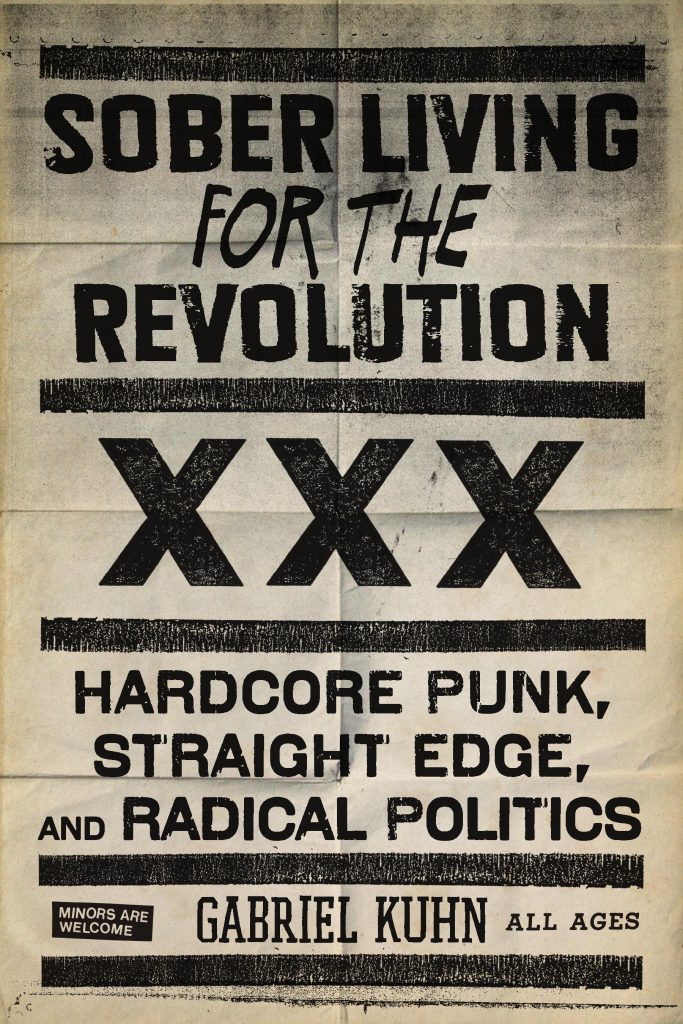by Luther Blissett
Medium
December 18th, 2016
Note: If you are part of the sXe scene, then you know more than I do, so I can’t say whether or not you should get this book. Check with your scene’s best reviewers. If you do decide to read this review, thanks for your time and attention. If not, no worries.
Published about seven years ago, Kuhn’s edited volume holds significant value. It is a great overview and introduction to the powerful potentials of straight edge (sXe).
Best passage of the book: Page 24 where MacKaye goes off on people leaving the scene:
“There is the classic moment when people say, “Yes, and then punk, or hard core, or straight edge, or whatever, died.” But it always died when they left the picture or when their band split up. It seems that they are talking about an energy that was contained within them — whereas I see an energy that is a constant ever-flowing river.”
Other gems: The Antifa Straight Edge; ManLiftingBanner interview; Interview with Jenni Ramme of Emancypunx.
Kuhn divides the book into five sections: Bands, Scenes, Manifestos, Reflections, and Perspectives. These divisions largely make sense, but the reflections seem to be more discussions of past projects. For anyone who actually works or tries to build, to create, or to get things done in DIY or punk cultures, this section is probably the most valuable. In most cases, except for the Hurley interview which appears to be included because of either his anarcho-primitivist perspective or his band’s status, the material is useful and engaging. Nick Riotfag and Jenni Ramme, in particular, share extensive reflections both on what worked well but also what flailed in their projects. More importantly, they indicate how they go forward. The Hurley interview, in contrast, seemed more like one guy attempting to rehash what he’s read about anarcho-primitivism and then put that in some context with sXe for this book. Frankly, that interview should have gone in a zine, not a book.
Far more interesting were the Perspectives, especially the Gomez brothers’ discussion of hardcore networks and sXe as intuitive resistance. Santiago engages in textual play at a level that’s only bested, in this volume at least, by Point of No Return’s “Bending to Stay Straight.”
While the manifestos will interest some folks, and as many online readers indicate they may be the most important part of Sober Living, the only one that I find inspiring was The Antifa Straight Edge. Then again, I’m an aging fag that isn’t straight edge… Hence some of my bias.
This may be my age showing. While Nick Riotfag’s piece is well-developed, and pretty well defended, there are repeated tones, structures, and references that remind me of academic writing–and I found that a bit troubling. That’s my personal taste, though. Having said that, it’s Riotfag’s type of analyses, internal to a scene that are well articulated and in-depth, that can bring important changes or crises of identities and issues–and then allow folks to move forward.
As Riotfag’s second piece indicates, this occurs.
Kuhn’s interview style, overall, is solid. He clearly knows the content and the context. There were a couple points when his questions seemed a bit leading, but then it also felt, in several places, like interviewees were dodging the question or not understanding the question. If the interviews were by email, Kuhn’s approach makes sense. Wish more interviewers in punk culture asked equally thoughtful questions.
Setting the tone for the whole book is, of course, the requisite opening interview with MacKaye. Next up was ManLiftingBanner. As a reader who started to read the book chronologically, these were two solid and important ways to open and frame the book. Roots and then radicalism.
Great framing.
While I did enjoy the diversity, both in terms of internationality and gender, there was a real gap in the presence of women. No doubt this, in part, reflects both turnover in the sXe scenes as well as the absence of women which so many interviewees discussed. The scene interview with Tanja about Sweden and then Jenni about Poland were exactly what they should have been: informative, detailed, connecting personal with the larger scene. They added useful and interesting perspectives of sXe — at least in portions of Europe. I just wanted to see more. For example, the Laura Synthesis interview had limited depth and breadth compared to the other interviews. However, at least she avoided pontificating like Hurley.
The book is worth buying. Kuhn takes straight edge out of a self-imposed ghetto and shows just how diverse and powerful sXe has been in shaping youth resistance cultures globally. From what we read, sXe caused some of the resistance in some scenes, while in other scenes, sXe was, and still is, a strategy for resistance. Sober Living for the Revolution, most importantly, offers multiple paths and examples for people interested in sober living and political militancy.
This is an opportunity to learn from others.
For those interested in neither sobriety nor social change, the book is still powerful and interesting. Sober Living collects multiple diverse perspectives on a complex scene, a scene that appears to be white middle class male meathead at first; take a moment and look past that and you find something quite diverse: something that bursts the heavy USA-centered myopsy when thinking, writing, and researching punk cultures. Kuhn helps you start to look.







